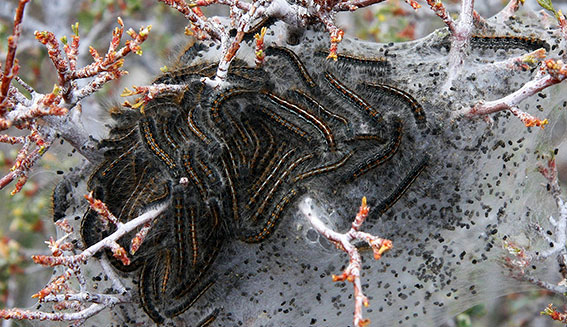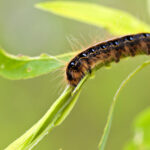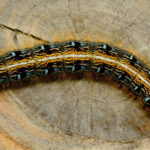Your cart is currently empty!
Damage
Tent caterpillar larvae defoliate broad-leaf trees and shrubs in a short time. Trees weaken by repeated defoliation and can be more vulnerable to various stresses, such as drought or infestation by other insects. Besides defoliation, the larvae produce large webs, or tents, in the crotches of tree branches that are a nuisance. Moreover, the immigration of larvae to protected areas to pupate can be a nuisance because thousands of them travel over roads, streets, driveways, walkways, fences, and buildings.






